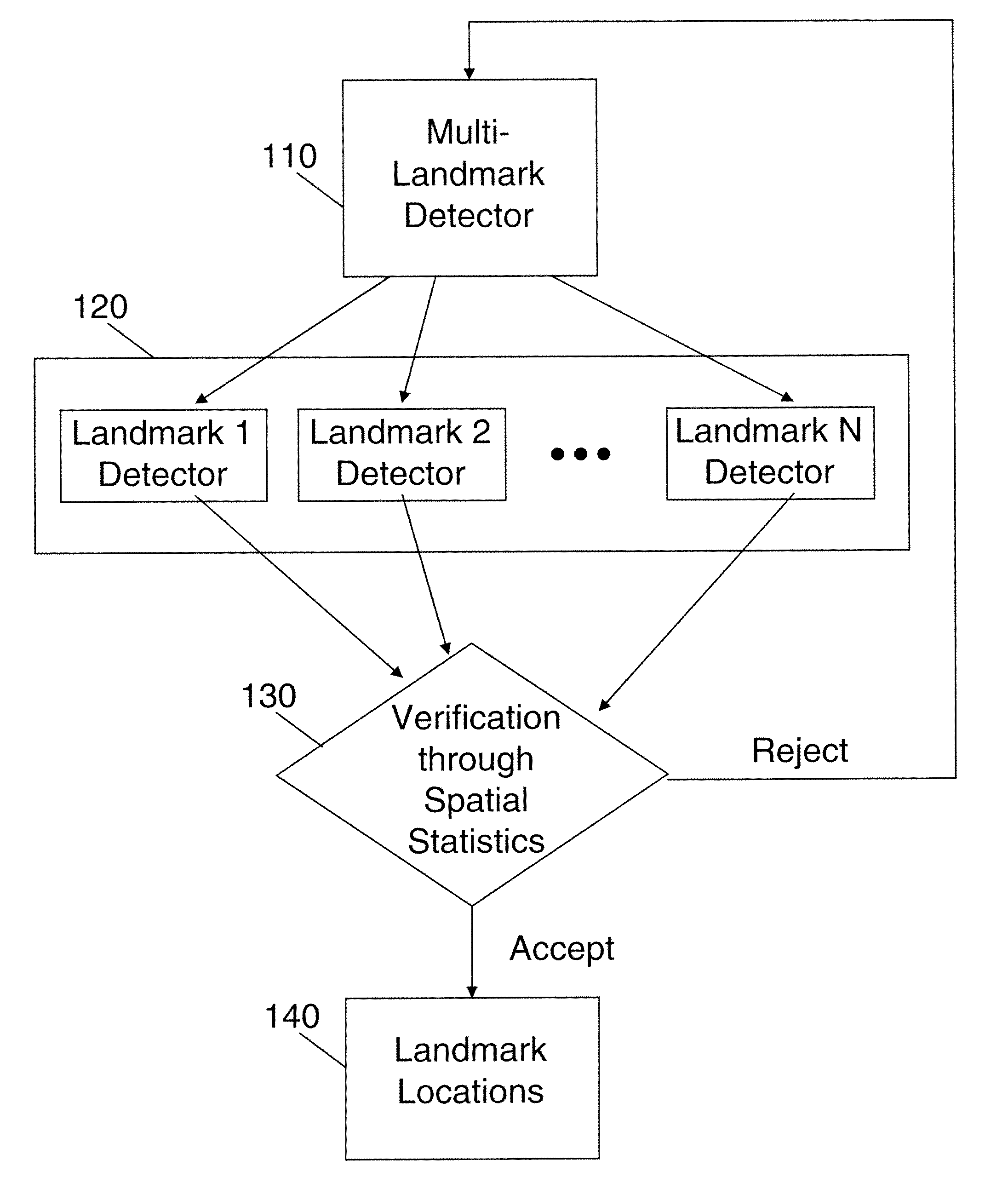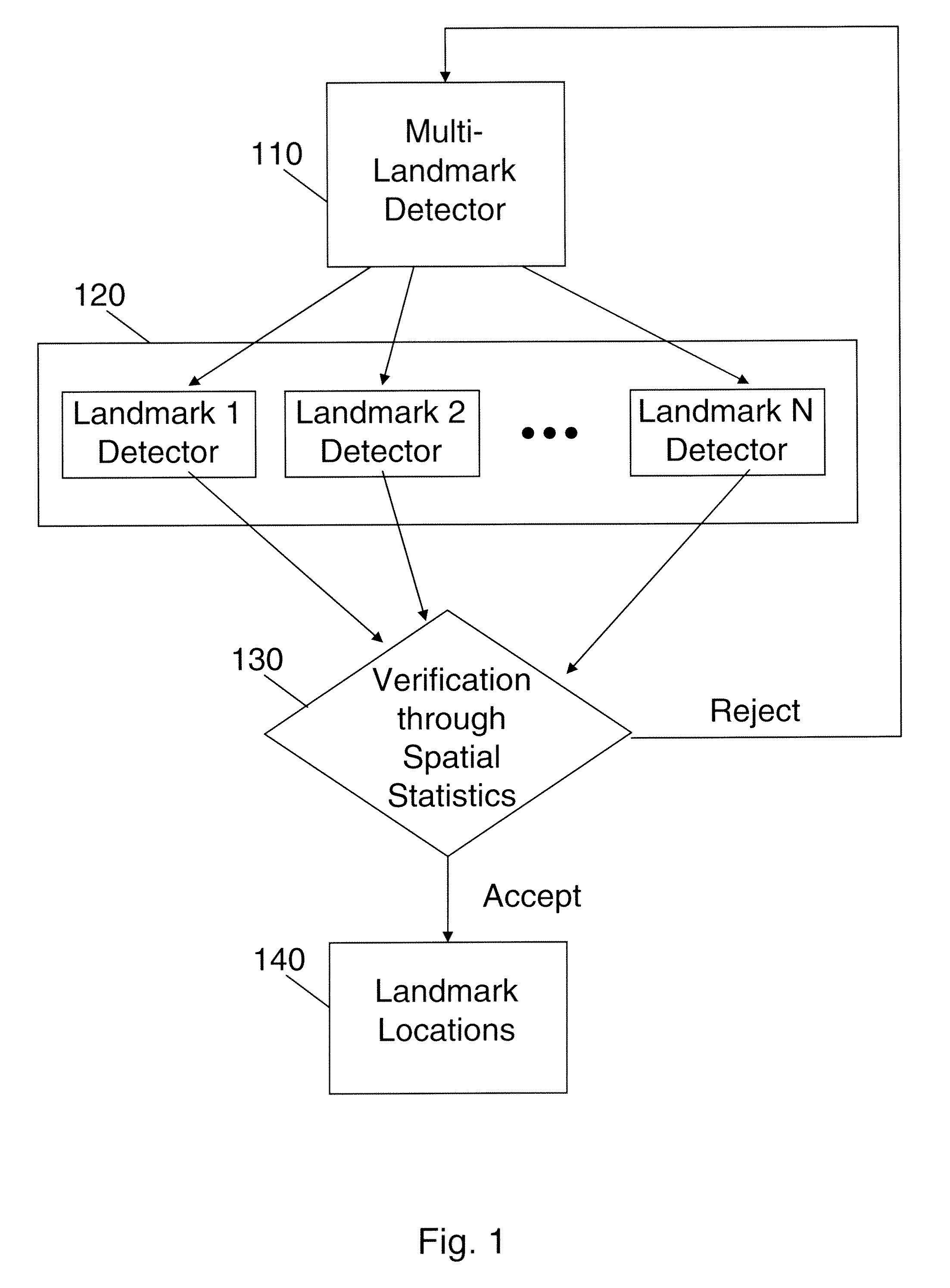Joint Detection and Localization of Multiple Anatomical Landmarks Through Learning
a technology of anatomical landmarks and joint detection, applied in image analysis, image enhancement, instruments, etc., can solve problems such as lack of generalization capability
- Summary
- Abstract
- Description
- Claims
- Application Information
AI Technical Summary
Benefits of technology
Problems solved by technology
Method used
Image
Examples
Embodiment Construction
1. Introduction
[0030]As discussed in the Background section of this disclosure, landmark detection is a fundamental and important task in the area of medical image analysis. Reliable landmark detection paves the way to higher level analysis and understanding of medical images, e.g., segmentation, registration and image retrieval. Most of the existing studies address a specific landmark detection problem by carefully studying the appearance characteristics or shape priors of the landmarks. Although these methods achieve promising results in detecting specific landmarks, they lack the general potential to be extended to other studies.
[0031]In the following, we present a learning-based method to detect and localize multiple anatomical landmarks from medical images, in accordance with an exemplary embodiment of the present invention. The method consists of three steps. First, a multi-landmark detector is applied to roughly detect candidate locations for multiple landmarks simultaneously...
PUM
 Login to View More
Login to View More Abstract
Description
Claims
Application Information
 Login to View More
Login to View More - R&D
- Intellectual Property
- Life Sciences
- Materials
- Tech Scout
- Unparalleled Data Quality
- Higher Quality Content
- 60% Fewer Hallucinations
Browse by: Latest US Patents, China's latest patents, Technical Efficacy Thesaurus, Application Domain, Technology Topic, Popular Technical Reports.
© 2025 PatSnap. All rights reserved.Legal|Privacy policy|Modern Slavery Act Transparency Statement|Sitemap|About US| Contact US: help@patsnap.com



